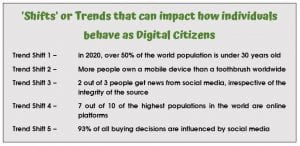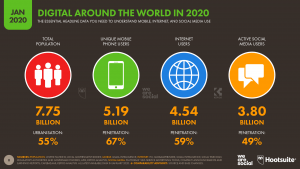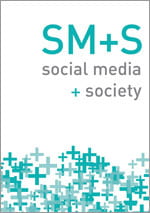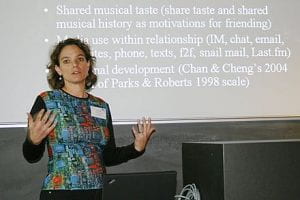Why select Social Networking for Information Professionals?
As a practicing Technologies and Information Leader in a school, I elected to complete INF506 with the intent to further develop my knowledge and confidence with for implementing social media platforms to support the school.
For years, I have known that the use of social networks is inevitable for schools and that more people, young and old, are accessing these sites as part of their everyday life as research shows that ninety-nine percent of Australian 15 to 17-year-olds regularly access the Internet for personal use (Australian Bureau of Statistics [ABS], 2014) and 87% use social networking sites (SNS) on a daily basis (A. Mitchell, Patrick, Heywood, Blackman, & Pitts, 2014).
Why is it Relevant?
Social networking remains a highly relevant topic that directly impacts everyday processes and function in my workplace. It made sense that we needed to implement the use of social networking sites into our school.
Previously, when I raised the taboo topic of ‘social media’ with other members of leadership and school staff, I was met with resistance towards implementing such a space for our school. The last time this was attempted it resulted in the online bullying of school staff. Today’s pitfall of technology has enabled a myriad of people to partake in voicing their opinions in a whole new* way…referred to as “Keyboard Warriors” and “flexing their Facebook muscles” (Eitner, 2018) For many years, I accepted this resistance as a gospel answer and not delved any further into introducing social networking into the school.
Professionally Moving and Changing –
Through completing the INF506 course content, it became evident to me that the “platform society” … refers to a profound dispute about private gain versus public benefit in a society where most interactions are carried now out via the Internet. (Van Dijck, Poell & De Waal, 2018)
INF506 has assisted to develop my knowledge and confidence in order to form a 2 tiered approach where social media is concerned for our school. This will include Student Education and School Based implementation.
I presented an implementation plan to the principal for the proposed Facebook page which was completed as the Social Community Project Report. Consideration of potential issues were addressed in the report, inclusive of an implementation plan and considerations for risk mitigation.
Through leadership, a shared vision and by providing technical and pedagogical support to staff, I have been able to revisit the idea of the use of a Facebook page, as schools can now rely on improvements made by traditional social media companies to reduce risk and improve functionality and services (e.g., Facebook, Chowdry 2018) The principal and leadership team have since approved the implementation of this space and it has become a responsibility for the Digital Technologies Team.
INF506 course materials and other articles, has demonstrated that there is a pressing need for the development of curriculum content around social networking safety and online etiquette. Explicitly teaching the management of individual social media presence is imperative for our students along with educating staff around this topic. I entered this course with the intent to implement a social media page, however my beliefs have further developed to consider students in order to equip them with the tools to successfully navigate the online networking world.
Teaching Individual Users to Consider Their Digital Shadow
Impactful Learning for a Digital Professional – Challenges & Opportunities
The learning from INF506 has made a direct impact toward the opportunity for the implementation of a Facebook page for the school. Studies have found that teachers having an ‘openness to change’ are more likely to experiment and integrate digital practices (Baylor & Richie, 2002). This notion coupled with the timing of the implementation of the ‘Remote Learning Program’ due to Covid-19 has allowed me to overcome one of the largest challenges of staff resistance which has provided a stumbling block in the past.
When introducing a social media page and a new website at the school during this time, I was met with resistance around personal privacy and the effect that such a space would have on an individual’s personal life and workload. I was able to address this through the preparation and research I had conducted during the development of the Social Community Project Report. A culture of change means that teachers can work towards change and feel they are able to experiment with new tools, approaches and teaching strategies without punishment (Little, 1982).
Through careful planning, consideration for reducing risks, clear communication and developing trust, I was able to assist staff to see the potential and opportunities for our school to enter the social networking world.
In closing, taking the time to investigate Social Networking for organisations has definitely been a timely and relevant topic of learning for my professional life, I feel confident to navigate the complexities of social networking implementation. Despite the overwhelming content and considerations, I am a believer that social media, if used correctly, can enhance businesses, organisations and my own personal life.
825 words
References
Australian Bureau of Statistics. (2016). 8146.0—Household use of information technology, Australia, 2014-15. Retrieved from http://www.abs.gov.au/ausstats/abs@.nsf/mf/8146.0
Baylor, A. L., & Ritchie, D. (2002). What factors facilitate teacher skill, teacher moral, and perceived student learning in technology-using classrooms? Computers & Education, 39, 395–414. doi:10.1016/S0360-1315(02)00075-1
Chowdry, A., (2018). Facebook launches ads in marketplace. Retrieved from https://tinyurl.com/y8kf5g4t.
Eitner, J (2018) Keyboard Warriors and Social Media Muscles in Schools Retrieved from https://www.bamradionetwork.com/keyboard-warriors-and-social-media-muscles-in-schools/
Little, J. W. (1982). Norms of collegiality and experimentation: Workplace conditions of school success. American Educational Research Journal, 19(3), 325–340. doi:10.3102/00028312019003325
Me and My Shadow: Take Control of Your Data https://myshadow.org/ accessed 27th May 2020
Mitchell, A., Patrick, K., Heywood, W., Blackman, P., Pitts, M. (2014). National survey of Australian secondary students and sexual health 2013. Retrieved from https://yeah-org-au.ezproxy.csu.edu.au/wp-content/uploads/2014/10/31631-ARCSHS_NSASSSH_FINAL-A-3.pdf
Monks, H., Barnes, A., Cross, D., & McKee, H. (2019). A qualitative exploration of electronic image sharing among young people: Navigating the issues of conformity, trust, intention, and reputation. Health Education & Behavior, 46(2_suppl), 106S-113S. doi:10.1177/1090198119873921
Rathore, S. (2017, August 22). 7 Key steps in creating an effective social media marketing strategy. [Blog post]. Retrieved from https://www.socialmediatoday.com/social-business/7-key-steps-creating-effective-social-media-marketing-strategy
Xu, W., & Saxton, G. D. (2018). Does stakeholder engagement pay off on social media? A social capital perspective. Nonprofit and Voluntary Sector Quarterly, 48(1), 28-49. doi:10.1177/0899764018791267
Van Dijck, J. (2018). Introduction. In J. Van Dijck (Ed.), The Platform Society. Retrieved from Oxford Scholarship Online.

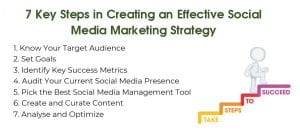 Rathore, S. (2017)
Rathore, S. (2017)


